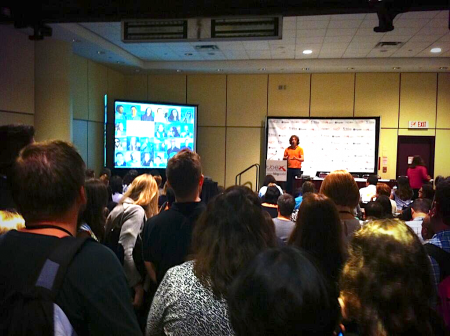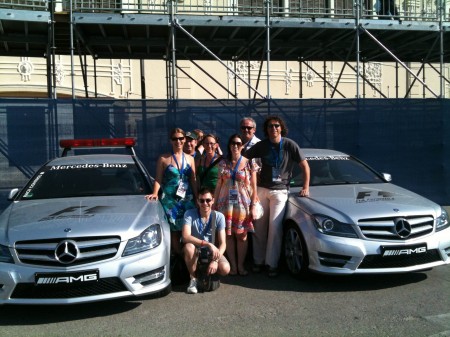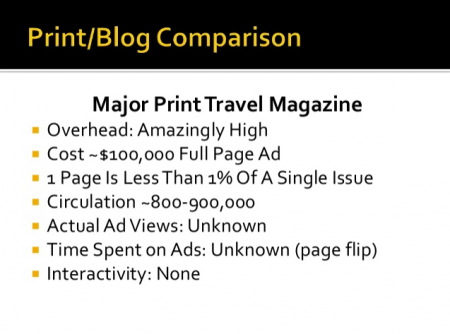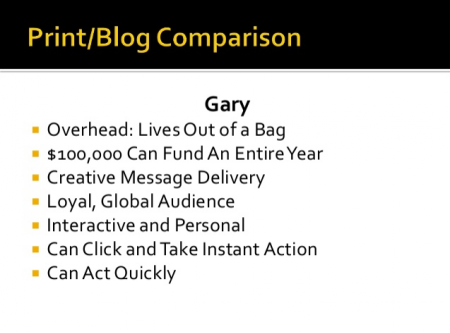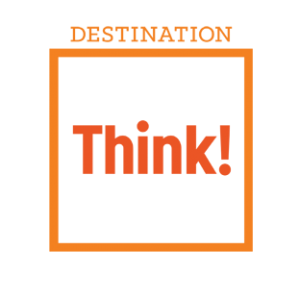The Archives
-
Internet, Marketing, Travel & Tourism
8 lessons learned for DMOs when working with bloggers
06.21.13 | Permalink | 5 CommentsThis is the second post about the key takeaways from my #TEBX presentation a few weeks ago. Yesterday, lessons for bloggers, today lessons for destinations:
1) A blog trip IS NOT a press trip
I’ve seen too many blog trips miss the mark because the press trip was taken as the template for a blog trip. Most press trips follow a “standard” format by planning the trip in detail, hosting the writer/photographer/video crew for a certain amount of time and then wait for the piece to be published.
Bloggers have very different motivations than traditional travel writers. They also work with different schedules, deadlines, etc. Some don’t even have a home to go to. They live on the road. Some, maybe a lot, don’t even want to be hosted. They just want to do their own thing. Some publish fast, often in real time, some take longer to publish.
When planning a blog trip, think about your objectives. For example: do you want lots of content in the moment or would it be okay to wait for (better quality) content? This makes a difference. Do you want copy, photos, video? This makes a difference. What niches are you after? There’s a long tail of bloggers for pretty much every criteria. There’s a blogger who travels the world dancing. There’s a blogger who travels the world singing karaoke. You get my point.
2) Invest time to find the right bloggers
A lot of DMOs are passive about bloggers. They wait for a blogger to come to them, and deal with things as they come. There are hundreds of travel bloggers and more are starting new pages every day. Be strategic: it’s better to be pro-active and invite bloggers. Think about your objectives and use them to find bloggers that will best meet them. Even as requests come in from bloggers, have a checklist ready to quickly assess what you’re going to do with them.
We use 9 criteria we use when we select bloggers for blog trips we help clients with. It’s worth taking the time to find the right ones.
3) Don’t just focus on web traffic when selecting
My biggest pet peeve is the obsession with reach. It’s old-school thinking, ie “better to get my message to 10,000 people who don’t care, than 1,000 who do”. Web traffic is not completely irrelevant, of course, but it’s only one criteria out of nine.
Web traffic can also be misleading. For example, a blogger could get 20,000 visitors a month to their blog. But maybe 80% of those visitors are going to three past posts that rank high in Google because of good SEO. They’ll never see the content about your destination. More important is repeat visitation; these are people who are loyal readers.
4) Rethink your measures of success
If the objective isn’t to get a message in front of as many people as possible, what is it then?
A traditional travel writer will produce a piece and the DMO will measure the Ad Equivalency (which is B.S.). Bloggers can do a lot more. A lot of the campaigns we’ve done go way beyond the traditional way of working with travel media. I wrote a whole piece about this recently.
5) Build lasting relationships
This is social media. It’s meant to be social. Most bloggers like to meet people and make friends around the world. A lot of bloggers also like to meet other bloggers. If you or your socially savvy staff build relationships with bloggers, it’s better for everybody. And don’t limit it there. Connect bloggers with local influencers, especially if they operate in niches. Somebody passionate about skiing will probably stay in touch with somebody else who’s passionate about it.
If you have a good relationship with a blogger, they will also likely a) produce more content b) retweet your content when relevant c) come back for another visit d) refer other bloggers e) bring old content back to the front over time.
From personal experience I know Valencia is doing this really well.
6) Think outside the box; bloggers can offer much more value than a few posts
This is related to #4. A lot of bloggers are very talented content professionals. Many are looking for opportunities to fund their travels as well. Need destination photography? Make it social. Hire one of the awesome photography bloggers to do the shoot. They will do great work and share it with their own community as well. Why hire a writer or photographer who produces content in the dark?
In this case, you would pay the blogger – not for posting in their own channels but to produce content for your channels. Be transparent about it, though. And don’t make specific demands or have expectations about the content they post in their own channels.
7) WIFI everywhere, all the time
This one is very tactical and got applause in my session and it pains me this is still not a standard feature of every blog trip: bloggers Tweet, Vine, Instagram and blog in real time. Disconnecting them from the internet means this won’t happen. Such a missed opportunity. Some blog trips don’t even have good Wifi in the hotels.
8) Personalize and build in free time
Every blogger is different and most have a passion for travel and a background in writing. They’re used to being independent and the good ones know what their audience likes. Tailoring the trip to the individual is logical but a lot of DMOs resort to the “destination top 10” for everybody. They don’t spend the time researching each blogger and their interest.
Free time is also very important. Bloggers like to do their own thing or take time to produce content. Some of the best feedback we received from our “Flanders is a Festival” project is the itineraries Flanders created. They were extremely short. Most of the trip was at the blogger’s discretion. They received (personalized) tips and ideas and a person to contact in case they did want a host. They loved it. We also gave them a portable WIFI hotspot.
Robyn wrote a great piece about TBEX on the Think! blog as well and here’s the full deck from my presentation.
-
Marketing, social media, Travel & Tourism
5 Lessons learned for bloggers when working with destinations
06.20.13 | Permalink | 4 CommentsA few weeks ago I presented two sessions at TBEX in Toronto. It was a very flattering experience. The room was packed both days, and I received a lot of great feedback from attendees, bloggers, DMOs and tourism businesses. My day 2 presentation became a featured presentation on Slideshare. It was a good week!
On day 1, I shared the lessons we’ve learned at Think! working with bloggers and destinations. At the end, I gave tips for destinations and bloggers that I will now share in two posts.
I’ll start with tips for bloggers.
(These tips are based on your ability to connect with DMOs and the tourism industry. I would never pretend to know how to be a successful travel blogger – that’s your territory. But I do learn a lot by watching how my 2-year-old daughter runs her travel blog travellingwithparents.com.)
1) FIND YOUR NICHE!
If you are a general travel blogger, it’s hard to stand out and create a group of loyal readers. By serving a niche, you have a better chance of reaching people who find your content relevant and passionately care about it. Somebody who loves to ski is more likely to read a ski travel blog. It’s also going to be valuable to people in the ski industry, since you talk to the people they want to talk to. But in order to be taken seriously, you need to able to speak credibly to the community.
Bonus tip: Your story matters too
During the speed dating sessions at TBEX, we talked with more than a hundred bloggers and very few could describe what the story is that they are telling or what niche they serve. Some bloggers “write for themselves” and that’s ok of course. But think about your angle. Is there a thread that runs through your site? How do your posts connect as a whole? “Looking for off-the-beaten-path experiences” or wanting to “emerge myself in the culture” is simply too standard an explanation. Jürgen and Mike’s for91days blog, however is not. It’s a story that’s easy to understand. So is the 365 days of dining in Richmond campaign blog that we helped out with.
2) BUILD A COMMUNITY
A lot of destinations still focus on web traffic as a their primary metric when it comes to selecting bloggers. It’s definitely important, but for us it’s only one out of nine criteria. Bloggers are influencers, and the degree of influence you have over your audience is what matters more. Why? Because we would like you to inspire people to come visit the place you’re writing about. Bloggers who have built a base of loyal readers and who cultivate an engaged social media community are more likely to have a higher degree of influence.
It’s easier to build a community around a niche, because people who share an interest are more likely to engage with each other (see #1). But you can also build a community based on your personality, skill or other quality you have. Whatever the case, you have to connect. It’s called social media for a reason.
3) BE CLEAR ABOUT YOUR APPROACH AND OBJECTIVES
There’s no right or wrong approach about how you travel or how you publish your content, but most destinations approach a blog trip like a traditional press trip. This often leads to a frustrated experience if you don’t like that format. When you’re approached by (or reach out to) a destination, make sure you’re very clear about your standard approach.
Do you prefer not to be hosted? Make sure the organization contacting you knows this. Is the only reason you want to visit, is because of a specific national park? Make sure they know as well. Otherwise you might be frustrated when your host has an action-packed itinerary filled with zoos, museums, restaurant after restaurant and other things you’re not interested in, while allowing you 30 minutes in park you came for in the first place.
Being clear about what you want and like might affect the outcome of whether you will be invited or not. But in the end, it’s better for both you and the destination to discover early if your expectations don’t align.
4) UNDERSTAND THE DESTINATION’S OBJECTIVES AND EXPECTATIONS
Before you commit to a blog trip, make sure you understand what the destination would like as a result. How do they define success? Do they have specific expectations about publishing? Do they expect you to write about specific things? Don’t forget that it’s an investment for them and it’s important to ask these questions up front so you can decide if you can or want to meet them.
We’re not big fans of defining specific publishing requirements. We’d rather let the destination speak for itself and have the blogger decide what and how much is appropriate for their audience. That’s why it’s important that the destination does its homework and invites the right bloggers. When discussing trips with writers, we’ll give bloggers an idea of what we and the client have in mind, including explaining why we’d like to invite them. For example: “we want a ski blogger to experience this new ski resort because we believe your audience would really like to know about it. We’ll leave it up to the you to decide how to best tell that story.”
But more often than not, we’ll think outside the box. We’ll include bloggers as part of a bigger campaign. Because they’re great content producers, storytellers and often live without too many constraints.
5) STAY HUMBLE
I’ve seen some travel writers working for big publications show up for a media trip with a suitcase and massive egos. They can be demanding, unreasonable and obnoxious. What I like about working with bloggers is that their passion is truly for travel and creating great content. That’s what’s got you started and that’s what motivates most of you. You’re all unique and some/most of you are real characters… but the far majority of you are insanely nice people. Please don’t lose that when you become more successful.
Tomorrow: 8 lessons learned for DMOs when working with bloggers
-
Management, Marketing, social media
9 criteria for selecting travel bloggers
01.29.13 | Permalink | 11 CommentsThis post was first published as a guest post on the TBEX blog.
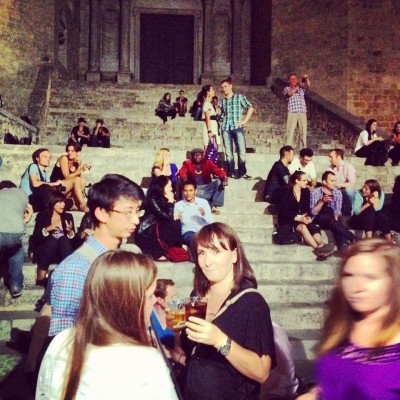
Blogger gathering at TBEX in Girona, SpainAt the moment, blog trips and bloggers hosted by a Destination Marketing Organisation (DMO) are still a bit of a novelty. DMOs don’t yet completely realize the value bloggers and bring but I expect an explosion in the near future when DMOs understand the value while travel bloggers realise the benefits a blog trip can offer and new travel bloggers want to join the club.
DMOs need a way to sort through all these requests. We’re not big fans of a one-size-fits-all approach to measure the value of bloggers but instead we like to match bloggers based on a DMO’s specific marketing goals. We also recommend that our clients take a pro-active approach to bloggers by inviting the ones with the best fit instead of a reactive one by waiting for requests to come in.
We have a good relationship with dozens of bloggers and a database with hundreds more. We have 9 criteria to select bloggers for blog trips and other campaigns, which are outlined in detail below. When developing social media strategies we recommend that our DMO clients also use these criteria to manage individual blogger requests.
1) Value to the blogger
I mention this one first, because if there’s no value for the blogger then there’s no use in working together. A blog trip or campaign needs to be a win/win situation. We’ve learned that it’s important that the DMO and blogger know each other’s expectations. Sometimes a blog trip might not work out for a variety of reasons. And that’s okay. But it’s better to set out the realities and expectations on both sides ahead of time.
2) Reach; the size of the audience
This is an important metric, but not as important as you might think – at least, not to us. We would rather work with a blogger who has a smaller audience and a higher influence. A blogger with 2,000 Twitter followers may be of more value than one with 50,000 if those 2,000 people are passionate, engaged and are likely to be influenced by the person they follow.
We use tools like Compete.com, Quantcast and Alexa to get an indication, or ask the blogger for data. We will also look at Twitter followers, Facebook likes, and other statistics. For bloggers, it’s a good idea to have this info handy as DMOs will ask for this.
3) Audience demographics
This criteria includes things like what language you blog in and what countries your readers are from, their age, education, income, etc. We’re not that interested in where the blogger comes from because their audience might come from a completely different place.
We will use Quantcast and sometimes other tools for this, although a lot of blogs don’t have enough traffic for these tools to provide valuable metrics. We sometimes ask bloggers, but we have had to make assumptions at times.
4) Influence in a niche
This one is more important to us than reach. We’re looking for people who are an authority in a subject matter. That’s the power of the Internet – there’s a community for every passion. It’s safe to assume that a wine blogger has an audience interested in wine. If we’re working with a destination that is seeking to leverage its wine products or experiences, we will pick a wine blogger with a small audience over a general travel blogger with a larger audience in most cases.
In order to determine influence, we look at things including comments on a blog (volume and types of comments) and how the blogger interacts with her/his audience. Why? It’s that personal connection that makes a blogger unique and influential. And we will also look at repeat visitation to the blog. This is an indicator of how loyal an audience is and therefore the influence the blogger has.
What we sometimes observe is that bloggers with a large audience lose the personal connection with their readers. Their blog becomes more like a traditional publication online. That’s to be expected and not necessarily a bad thing, it just changes the types of initiatives we will invite them for, and the approach we take. They may be better suited for a traditional press trip.
5) Connection to other influencers
This one is closely related to #4. Blogging is social. We believe that a blog trip or a blog campaign’s value doesn’t just come from the value as a result of the produced content, but also from the personal connections created. A blogger with a lot of connections to other influencers is more desirable as that means there’s a better chance that their messages are then amplified or retweeted by other influences. A good relationship with one blogger can also lead to a referral to another. We often ask other bloggers for suggestions about other writers.
6) Quality and style of writing, photography and/or video
This one speaks for itself. We prefer blogs with quality content. And sometimes one blogger’s style fits better with a particular destination brand than another. And it doesn’t mean that we look for moderate bloggers only, by the way. We seek honesty and transparency, otherwise a message won’t be credible. The blogger at TBEX who writes critical posts just to make PR people uncomfortable would probably not be invited, though (see #9). Often, quality trumps reach and influence.
7) Speed of communication
We don’t have a specific preference. It varies from initiative to initiative. Most of the time, a blog trip is designed to create a lot of social content right away, and speed is important. Other times, it won’t matter too much if it takes a few weeks for us to see a post (months is pushing it). The longer it takes, the more the details and energy are lost. Plus, the copy ends up looking more like it belongs in a traditional publication.
8) Use of technology and tools
Does the blogger tweet, Instagram, or post to fan pages during the trip? This is obviously helpful.
And it also varies. If we’re working on a campaign where we want a lot of content in the moment, Twitter, Facebook, and Instagram are important. In some cases, they’re not.
Sometimes we look for quality, influence, and reach for a specific tool or network. We invited a big Instagrammer to Flanders, for example. The Costa Brava even hosted an Instagram trip.
9) Personality
Is this blogger easy to work with?
We will happily sacrifice reach or influence for a nice person when we’re hosting a group of bloggers. Personality type tells us something about the bloggers’ relationship with their readers, and that’s important in social media. Other factors including professionalism and attentiveness are equally important. If it takes weeks for somebody to reply to an email, or if they don’t follow practical instructions we get worried. We often check references as well by calling another DMO the blogger has worked with.
We have good results using our criteria above. In the future we hope to build out our database so we can be a good matchmaker between bloggers and the tourism industry that delivers benefits for both.
-
Marketing, social media, Travel & Tourism
How can destinations measure the value of travel bloggers?
01.23.13 | Permalink | 4 CommentsI wrote this post as a guest post on the TBEX blog.
#blogtripF1
Destination Marketing Organisations (DMOs) have hosted influencers for a long time. It used to be the exclusive territory of travel journalists. They were courted, invited and hosted in order to generate awareness and consideration for a destination.
In order to measure this PR most DMOs used the “Advertising Value Equivalency” (AVE). You take the size of the produced piece, use the equivalent cost of running an ad of the same size in the publication, apply a multiplying factor because editorial is more credible and there’s your equivalent value of “free” advertising.
Most people in the PR industry agree that AVE is significantly flawed. But for years, it’s all we had. It was simple and easy to calculate – and at least it was consistent, something we could monitor over time, and benchmark against the competition. At least that was something.
There’s no such direct measure for blogger-based campaigns at the moment. Keith (Velvet Escape) and Melvin (Traveldudes) presented a first draft of a method calculating the value of a blog at a TBEX session in Girona. It was loosely based on AVE and an attempt to quantify the value of a post in dollars.
I applaud the attempt because at least it will provide DMOs with some guidance and offer benchmarking possibilities. But I’m not a fan of trying to use an old-media method that’s already shaky at best and applying it to a new world model in order find a social media equivalent for it. It assumes a specific blogger will provide equal value to all destinations and that’s simply not true.
There are a multitude of travel blogs out there, and with careful research, we can unearth a blog and a writer who has the best fit with a specific destination and its objectives. Often we end up bringing bloggers who have a specific skill or niche. And when we bring a group of bloggers together, the composition of that group, the mesh of personalities, matters.
It’s not just the size of a blogger’s audience that’s important, but the likelihood of delivering a relevant, credible, and authentic message to their network. Passion speaks volumes. We need to believe that their message will influence a reader’s travel decisions.
At Think! we love working with bloggers because they are, generally speaking, very passionate and excellent creators of content. We work with dozens of DMOs around the world, helping them arrange blog trips, and we involve bloggers in many of our campaigns. We tie the way we measure a campaign involving bloggers to the specific marketing objectives.
We research, identify, and approach the right bloggers for the campaign, assist with the trip planning, and provide consultancy to clients on how to make these travel (or cultural) writers feel most engaged or valued.
For example:
- In Belgium we worked with Tourism Flanders to identify, contact, and send 100 travel and music bloggers to festivals all summer long, with the objective of generating awareness for Flanders as a prominent festival destination in Europe.
- In Richmond, British Columbia, we helped find a food blogger who would eat and blog about a different Richmond restaurant every day for a year with the objective to position Richmond in the centre of the foodie community.
- In New South Wales, Australia, we organised a month-long bus trip of bloggers including a photographer and videographer with the objective of showcasing the destination and creating content in a more social way.
Through our work we know many bloggers and we hope we have developed a good reputation amongst them. Because we have these relationship it makes it easier and easier to find the right bloggers for our projects.
-
social media, Travel & Tourism
The business case for blogtrips in two simple slides
At Think! we love working with bloggers because they are, generally speaking, very passionate and excellent creators of content. We work with dozens of DMOs around the world, helping them arrange blog trips and we involve bloggers in many of our campaigns.
About a month ago I attended the 2012 Digital Tourism Innovation Campus in Barcelona. Gary Arndt from Everything-Everywhere presented. Gary is one of the biggest travel bloggers out there and he’s permanently on the road. Gary laid out the business case for working with bloggers in these two simple slides.
Pretty straight forward isn’t it?
There’s more good info in his full presentation below.

